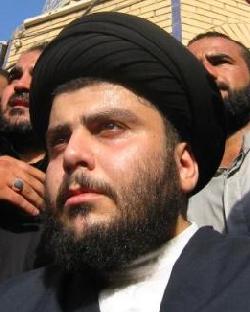Two Types of Splinter Groups Break from Moqtada al-Sadr
Publication: Terrorism Focus Volume: 4 Issue: 10
By:

The recent rise of Sadrist splinter groups is a sign of a major shakeup in the Sadrist movement, so far mainly dominated by Moqtada al-Sadr. These splinter groups represent a deep-seated change in the Sadrist faction in both ideological and militaristic terms, which could have major implications for the future of Iraq. The increase in the number of these splinter groups since 2005 is mainly due to al-Sadr’s growing relations with the Iraqi government and Tehran. These groups view al-Sadr as a traitor who has forsaken his father’s stance against foreign threats for personal and political gain. The participation of al-Sadr’s representatives in parliament and his flirtation with Tehran since 2005 have directly led to the creation of two distinct breakaway groups. These two groups are millenarian-cultic in ideology and gang-like in the organizational sense. They are mostly formed in such locations as Baghdad and southern Iraq and are made up of young men who maintain anti-occupation or anti-Sunni sentiments.
The followers of Abu Maha and Ismael al-Zerjawi represent the first type of Sadrist splinter groups (Terrorism Focus, October 10, 2006; Terrorism Monitor, November 16, 2006). They are the most anti-Sunni faction of the Sadrists, who broke away from al-Sadr primarily after the increase of sectarian tensions in 2005 (although some even splintered earlier). These groups can be found largely in Sadr City, where most of the Sunni-Shiite fighting takes place. Al-Zerjawi, also known as Abu Deraa, is best known for his attacks on the Sunni district of Adhamiya in northern Baghdad (Terrorism Monitor, November 16, 2006). Other Mahdi Army officers, like Hassan Salim and Haj Shimel, are veterans of the 2004 Sadrist uprising in Najaf against U.S. forces. These former commanders all maintain anti-occupation and anti-Sunni ideologies with an on-the-field military background.
The second type of splinter group, such as the Hussain Army, led by Mahmud al-Hassani Sarkhi, and the shadowy cult of Dhia Abdul Zahra and his Soldiers of Heaven, is the most cultic and sectarian. As Mahdistic movements, these groups are mainly led by young or middle-aged clerics who seek to overcome any form of Shiite orthodoxy, with claims to worldly power through military force. The origin of these groups dates back to the late 1990s after the death of Moqtada’s father, Ayatollah Sadeq al-Sadr, who is believed to have been the most perfect representative of the Hidden Imam on earth. The bases of these groups are primarily located in southern cities such as Karbala and Basra, which have long histories of millenarian-mystical movements with anti-establishment ideologies. They represent the most anti-Iranian and Arab nationalistic currents in the Sadrist splinter groups as they vie for followers among both the tribal and urban population of southern Iraq. It is interesting to note that Sarkhi has also found followers in Iran, despite his anti-Iranianism. The conservative clerical establishment in Iran, however, identifies Sarkhi as a false representative of the Mahdi and even as an Israeli agent (Baztab, May 17, 2006).
The implication of the growing rise of these movements is complicated. First and foremost, these splinter groups can cause major instability in the Sadrist movement that is being gradually pacified by the Najaf clerical establishment. As members of the Mahdi Army break ranks and join these new groups, al-Sadr begins to lose more control of his followers and lessens the prospect of containing his movement within the boundaries of the Iraqi political process. Second, these groups can also unleash a major attack on the Shiite orthodoxy in Najaf, creating new cultic and sectarian movements in the Shiite community of Iraq that could lead to a new religious civil war.
The Najaf clerical establishment will most certainly play a major role in quashing these groups, as it did in January when, on the eve of one of the holiest days in the Shiite calendar, Ashura, the followers of Zahra were crushed by Iraqi and U.S. forces, tipped off by Grand Ayatollah Ali al-Sistani’s informants who had infiltrated the group (author interview with a seminary student in Qom, January 29). The key is to recognize that this new phenomenon is an internal Shiite problem and that the clerical establishment in Najaf is best prepared to match the rise of these splinter groups.



